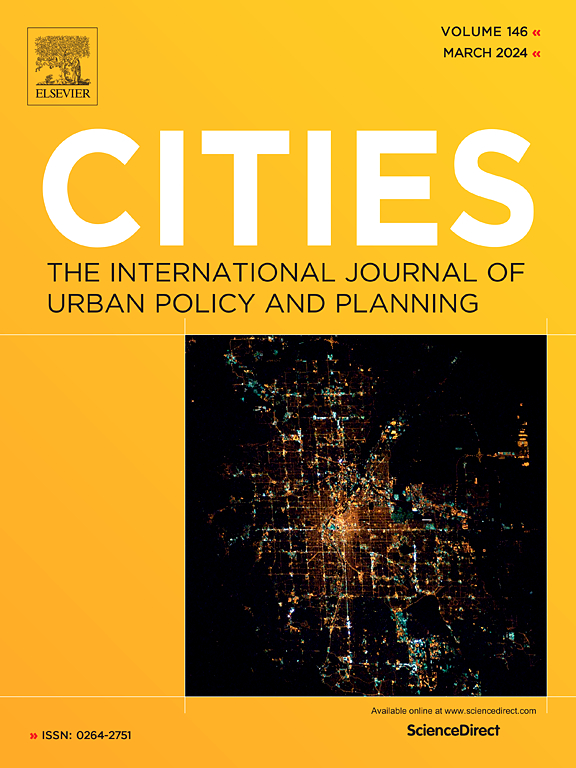市中心与周边环境的关系:挪威四个城市的城市空间结构与居民访问市中心频率之间的关系
IF 6
1区 经济学
Q1 URBAN STUDIES
引用次数: 0
摘要
许多城市都在努力加强市中心的建设,本文为规划者和决策者在这方面的探索提供了有价值的见解。本研究采用比较案例研究的方法,对挪威四个拥有2.24万至5.6万居民的城市的城市空间结构与市中心访问频率之间的假定因果关系进行了研究。调查数据显示,许多居民每周访问市中心一次或多次。交叉分析和对具体情况敏感的个案分析揭示了市中心访问与解释变量之间复杂的、取决于具体情况的关系。土地使用结构和交通系统都会影响受访者访问市中心的频率。空间结构变量和对城市中心的评价可能会放大或抵消竞争性零售和服务目的地的影响,而这种影响对访问频率至关重要。这项研究证实了人们经常提到的城市中心绩效下降的解释因素,并强调了一种复杂、脆弱、依赖环境的关系。因此,它加深了我们对市中心绩效以及城市空间结构如何建立行为条件的理解。本文章由计算机程序翻译,如有差异,请以英文原文为准。
The relationship of the city centre to its surroundings: Correlations between urban spatial structures and inhabitants' frequency of city-centre visits in four Norwegian cities
Many cities seek to strengthen their city centre, and this paper contributes valuable insights for planners and decision-makers in this quest. Taking a comparative case-study approach, the study examines the assumed causal relations between urban spatial structures and the frequency of city-centre visits in four Norwegian cities with 22,400–56,000 inhabitants. The survey data show that many inhabitants visit the city centre once or more per week. The cross-case and context-sensitive case-by-case analyses shed light on a complex, context-dependent relationship between city-centre visits and the explanatory variables. Both land-use structures and the transport system influenced how often the respondents visited their city centre. The effect of competing retail and service destinations may be amplified or counteracted by spatial structural variables and the appreciation of the city centre, an influence that is pivotal for the frequency of visits. The study confirms the often-mentioned explanatory factors of reduced city-centre performance and highlights a complex, fragile, context-dependent relationship. Hence, it advances our understanding of the performance of city centres and how cities' spatial structures establish behavioural conditions.
求助全文
通过发布文献求助,成功后即可免费获取论文全文。
去求助
来源期刊

Cities
URBAN STUDIES-
CiteScore
11.20
自引率
9.00%
发文量
517
期刊介绍:
Cities offers a comprehensive range of articles on all aspects of urban policy. It provides an international and interdisciplinary platform for the exchange of ideas and information between urban planners and policy makers from national and local government, non-government organizations, academia and consultancy. The primary aims of the journal are to analyse and assess past and present urban development and management as a reflection of effective, ineffective and non-existent planning policies; and the promotion of the implementation of appropriate urban policies in both the developed and the developing world.
 求助内容:
求助内容: 应助结果提醒方式:
应助结果提醒方式:


